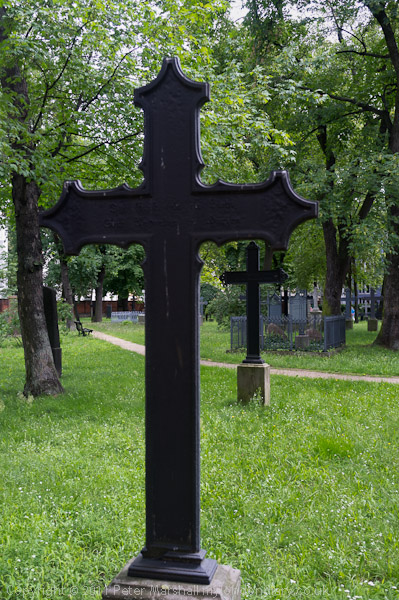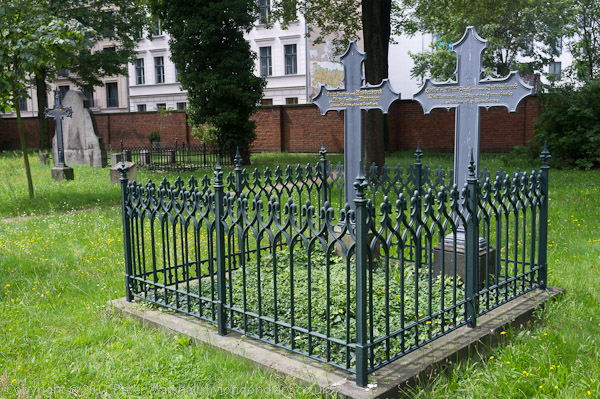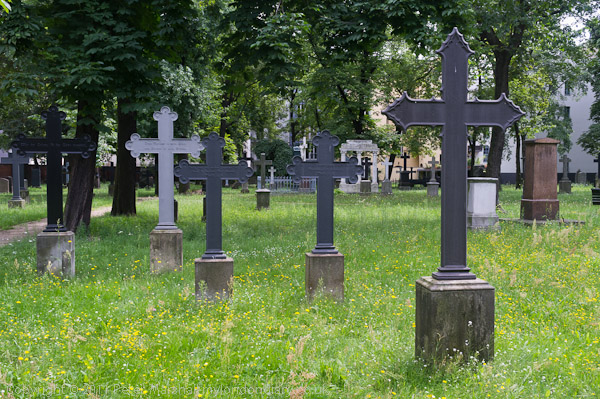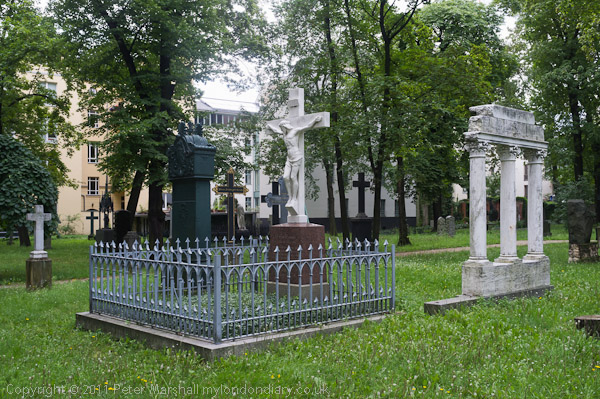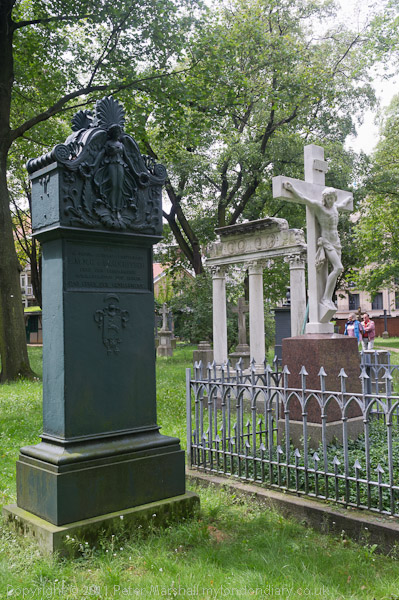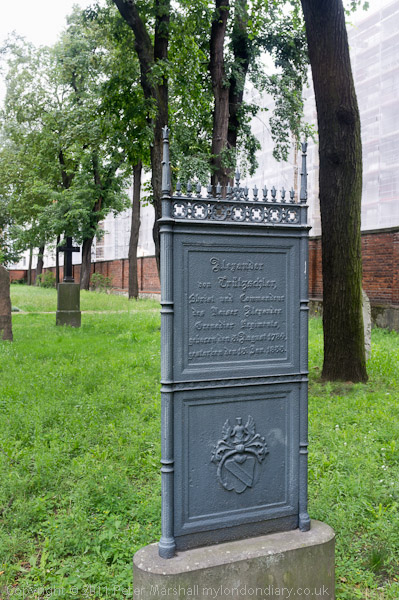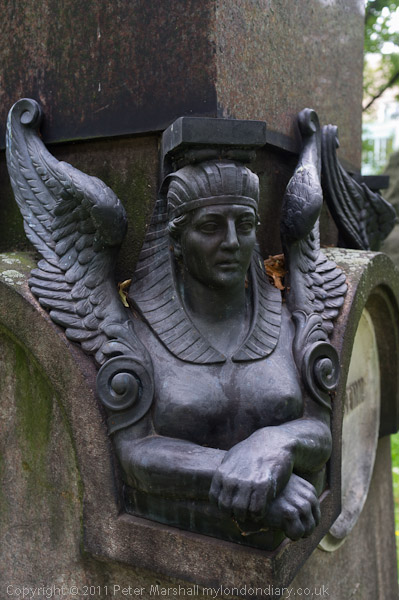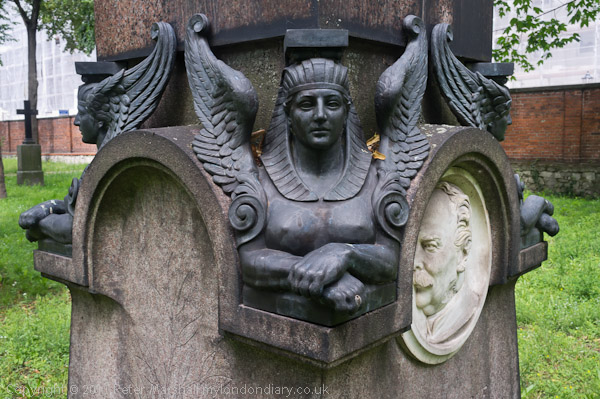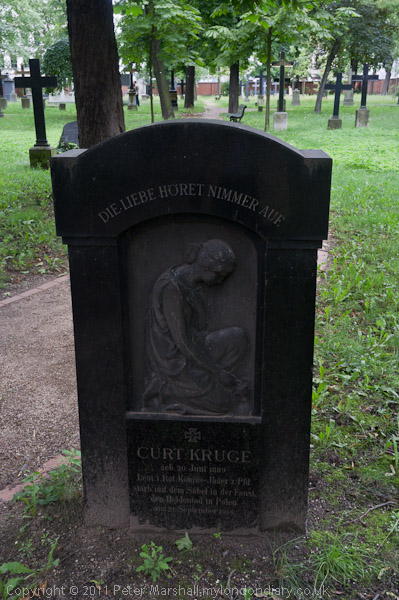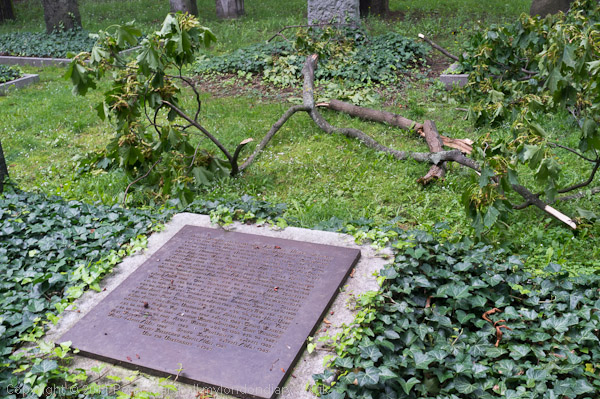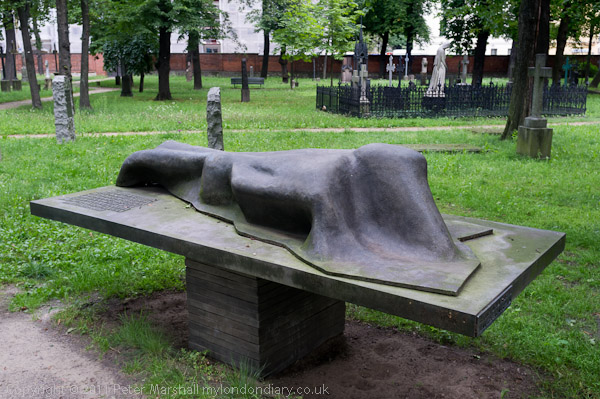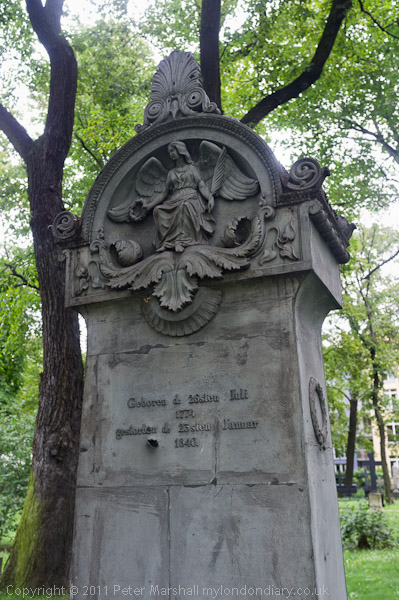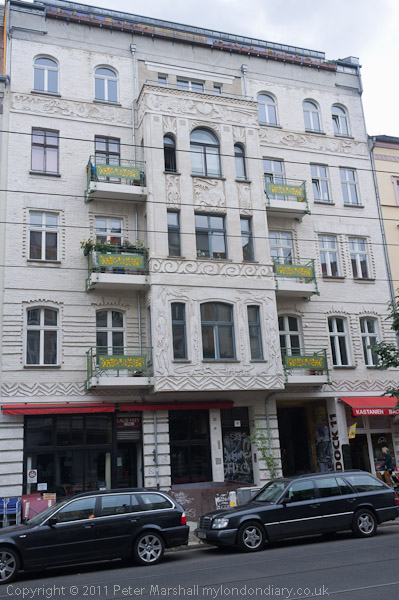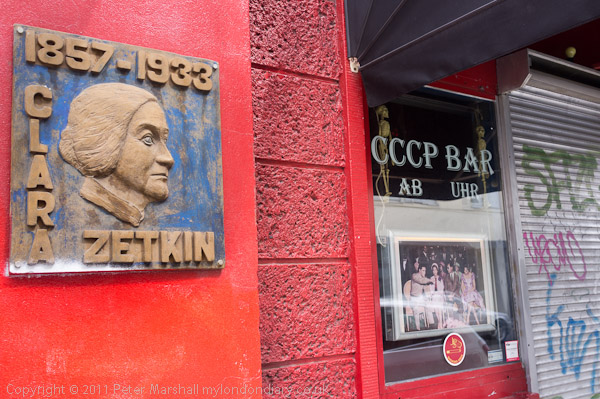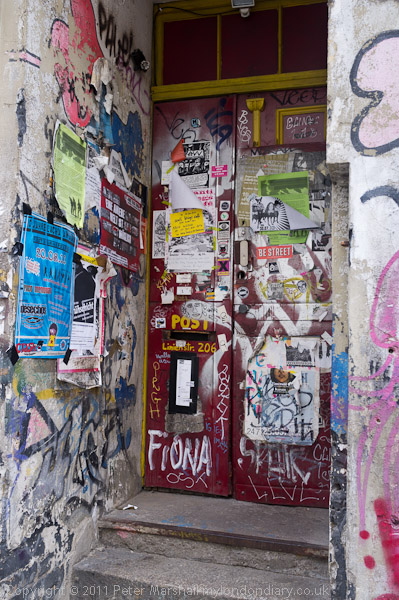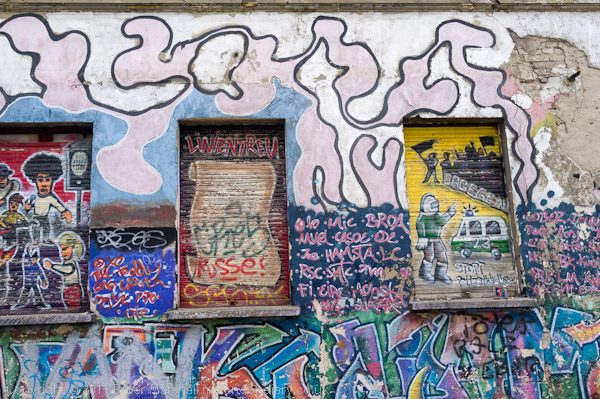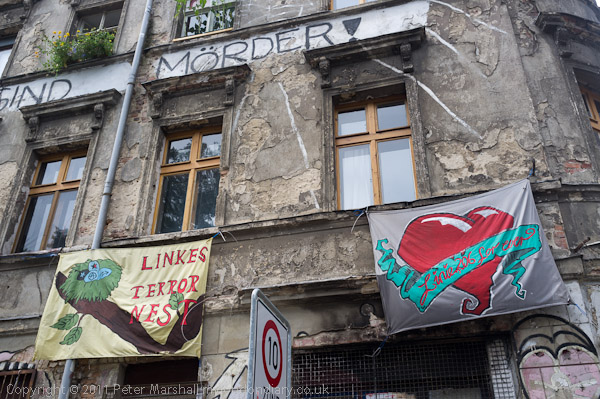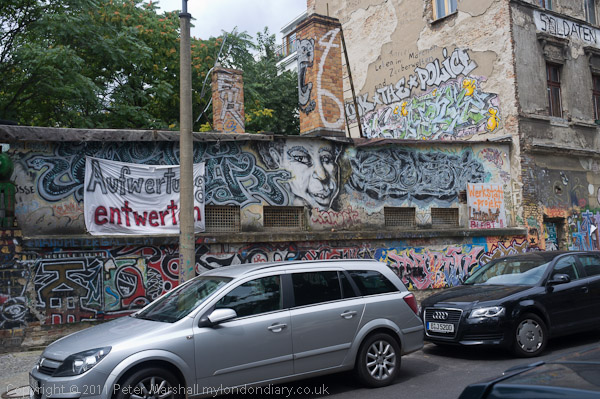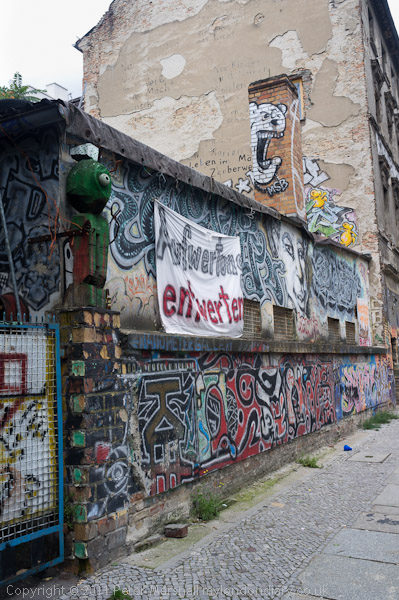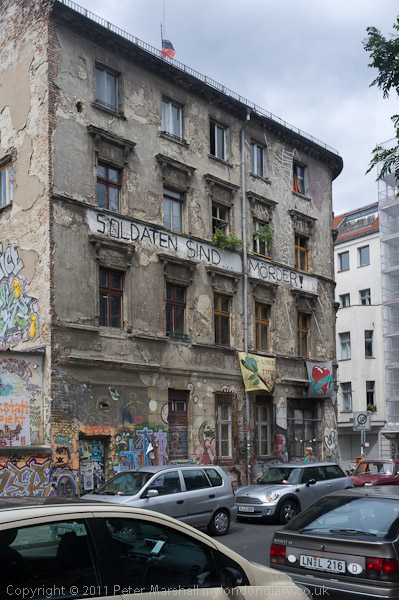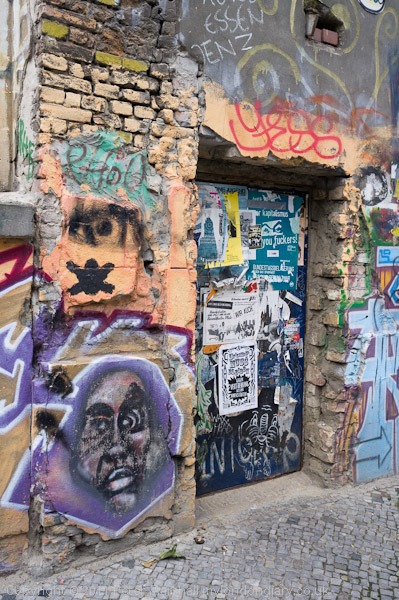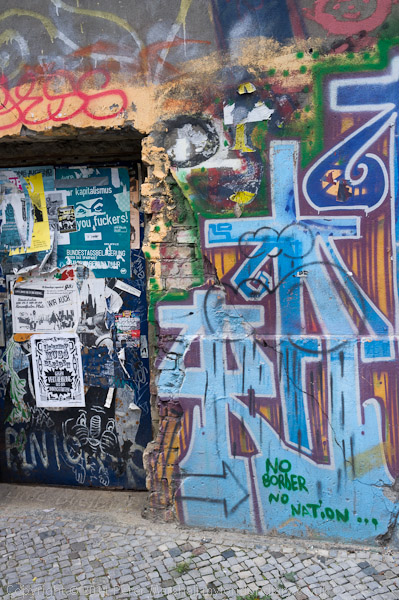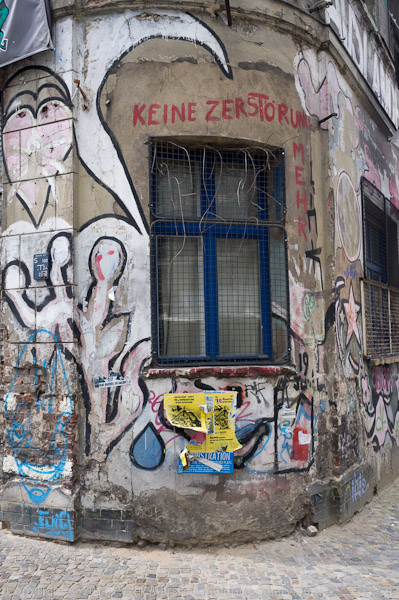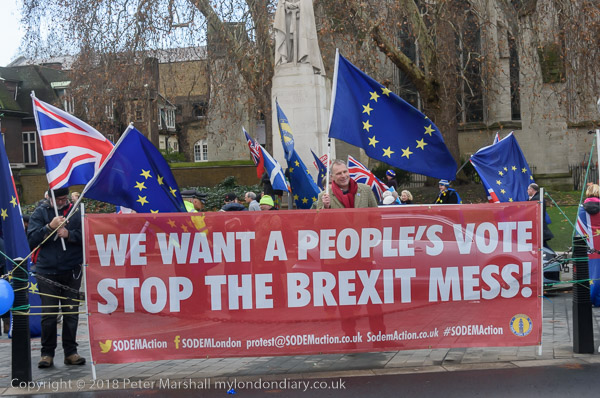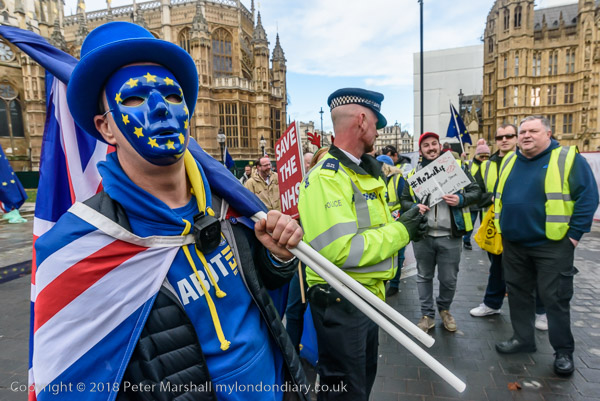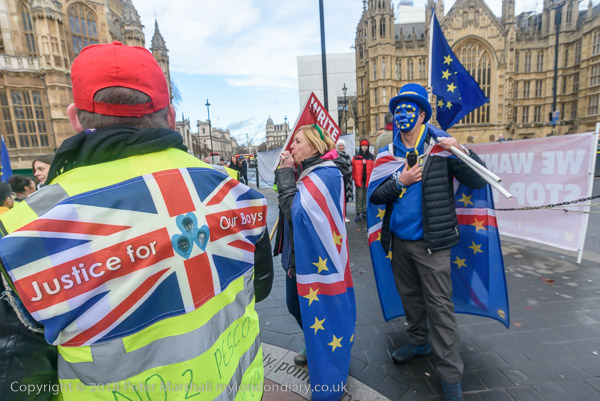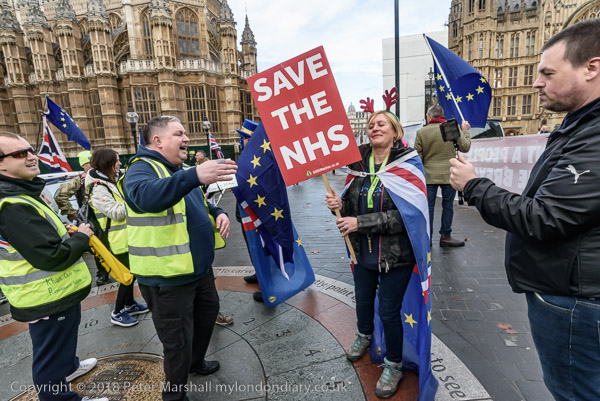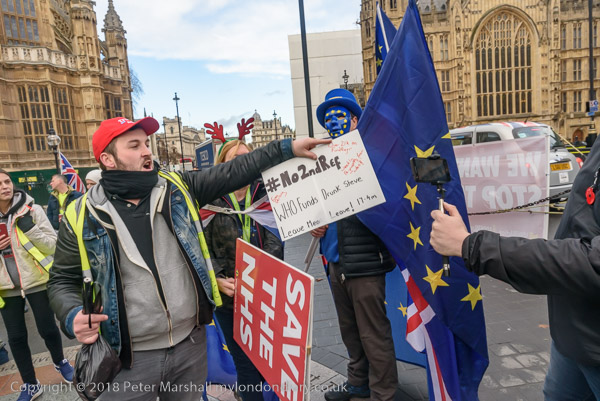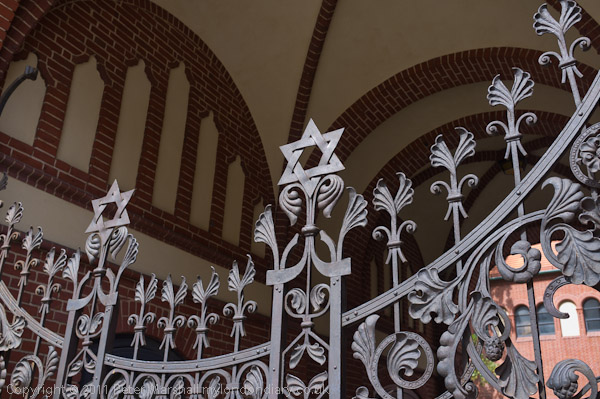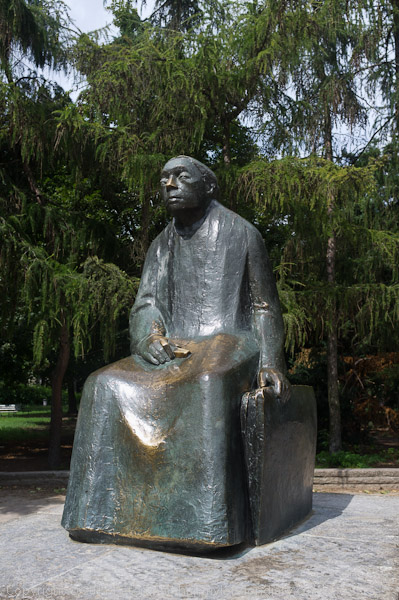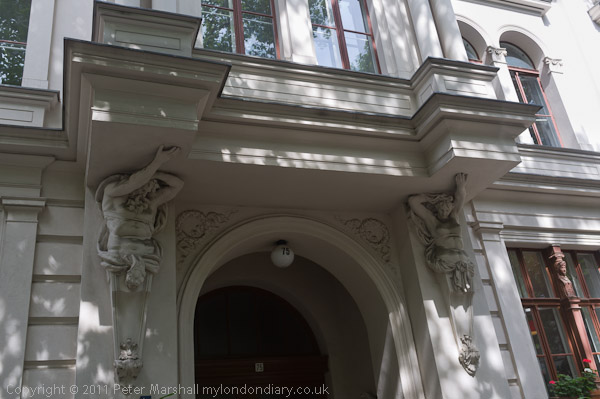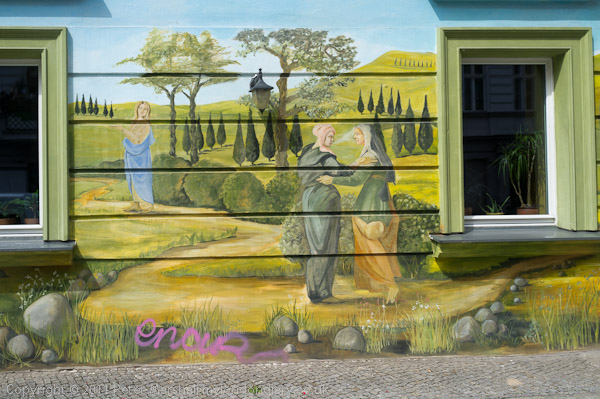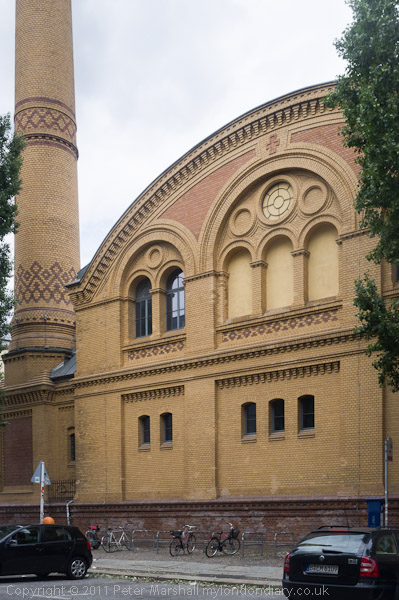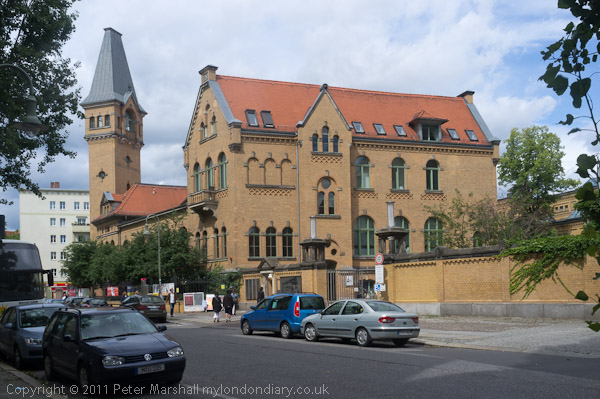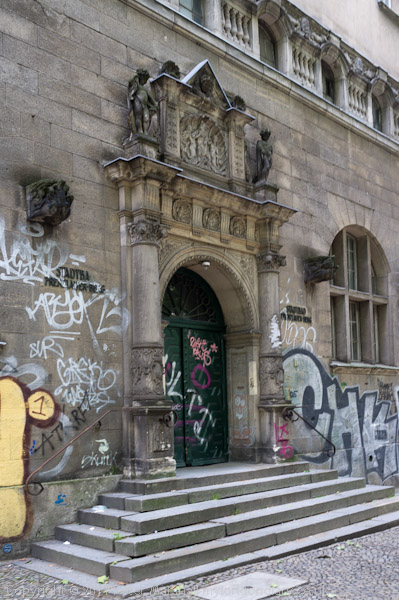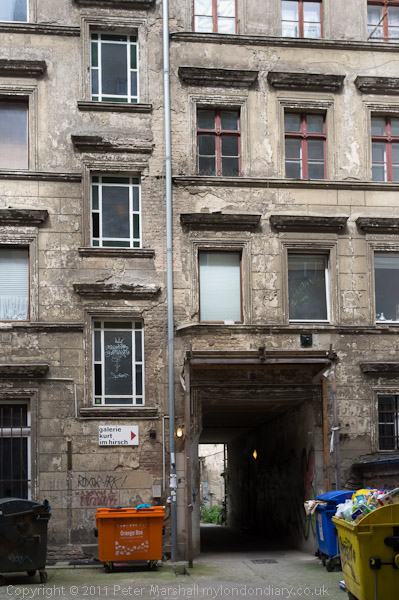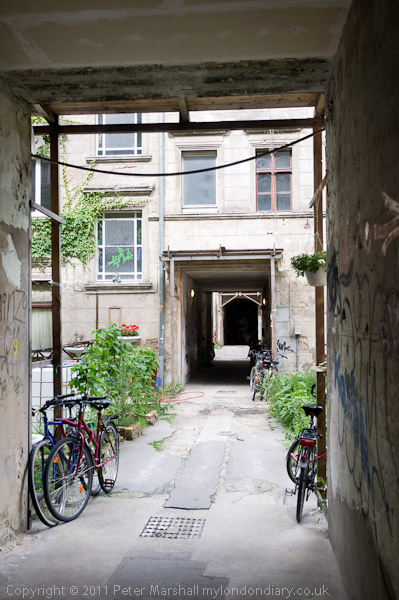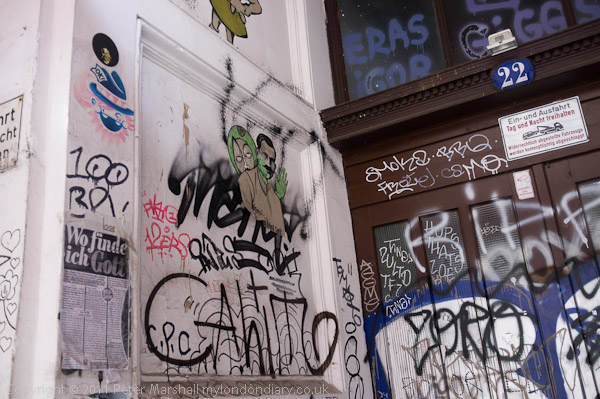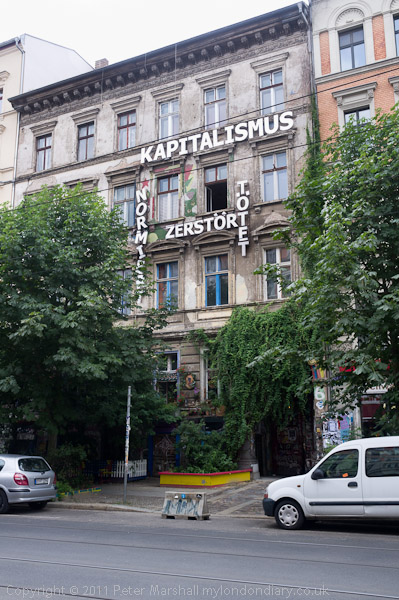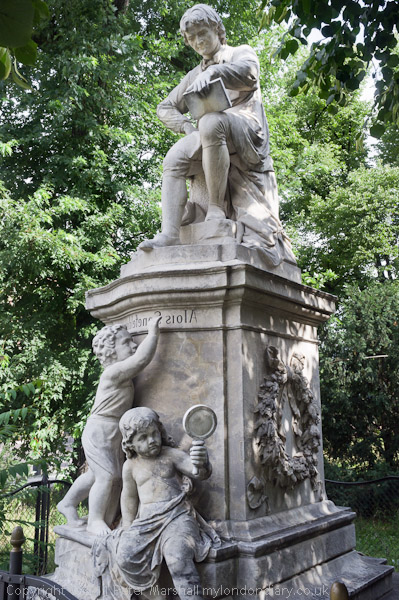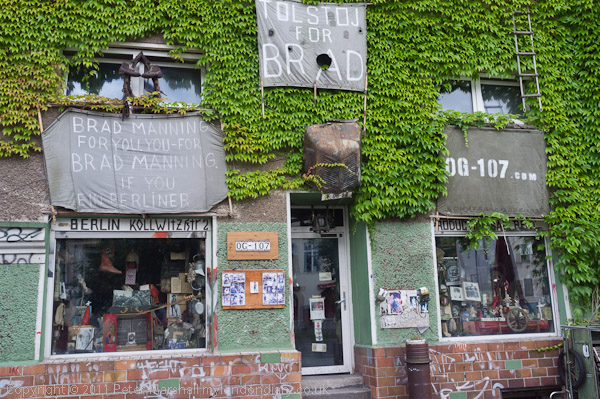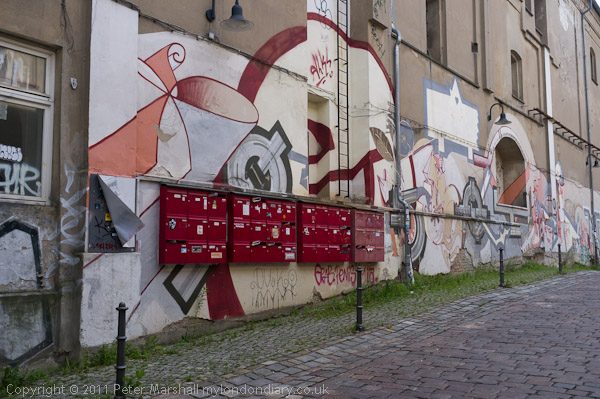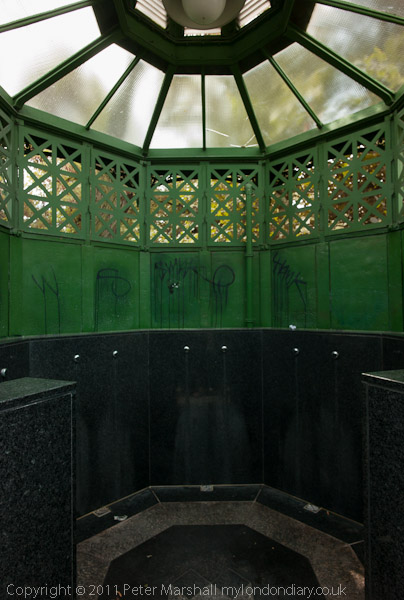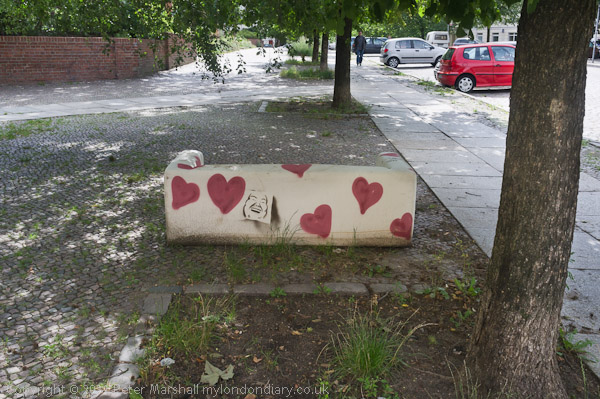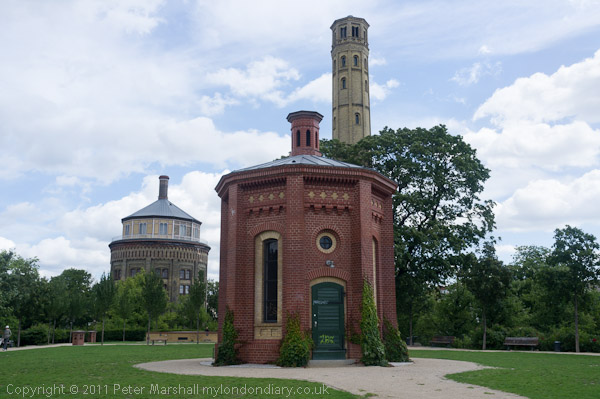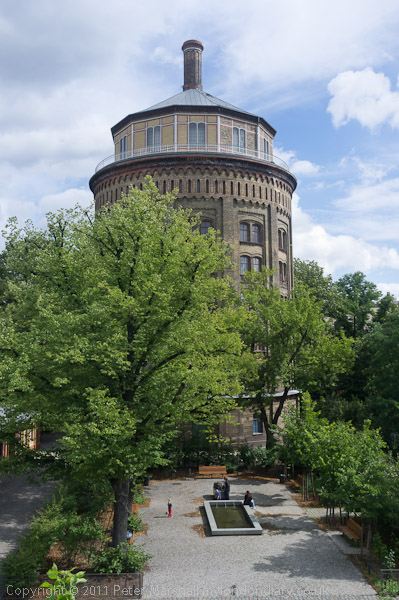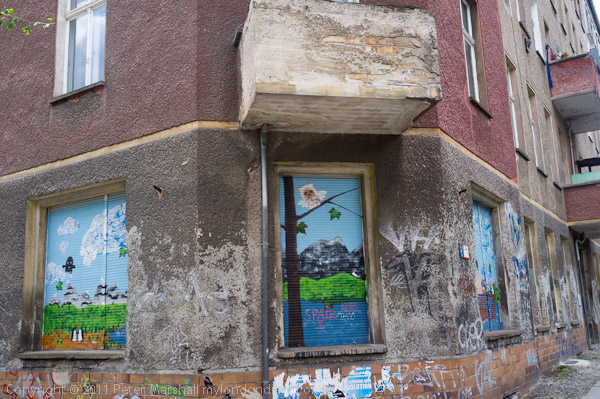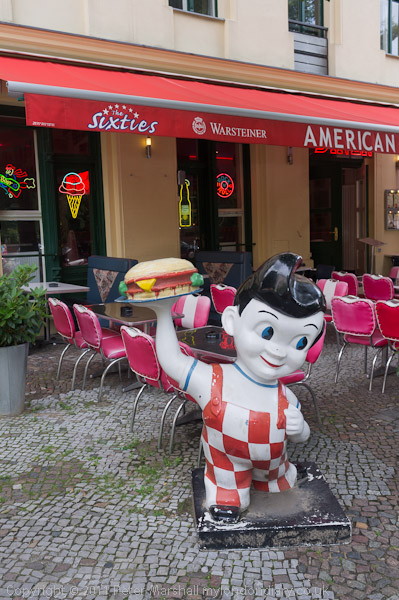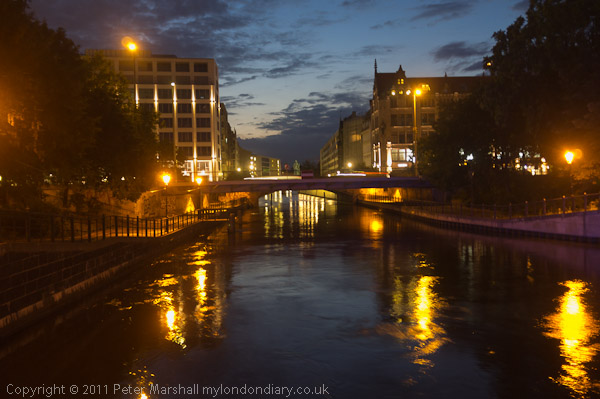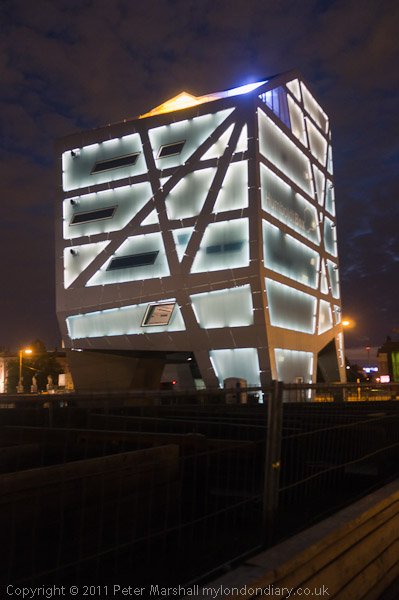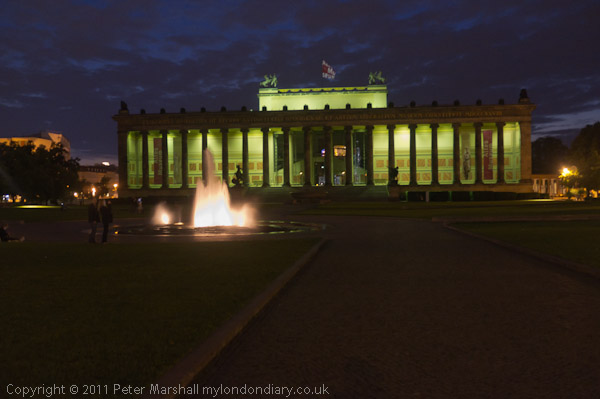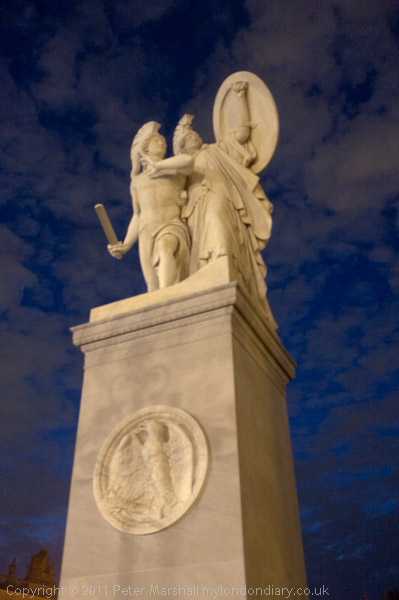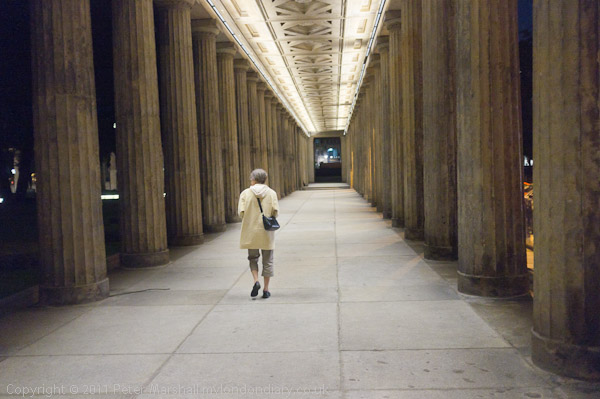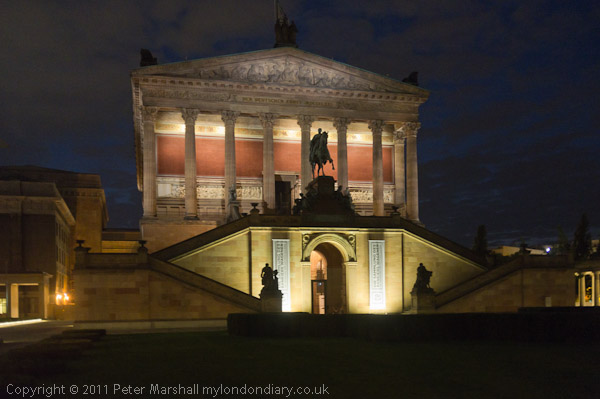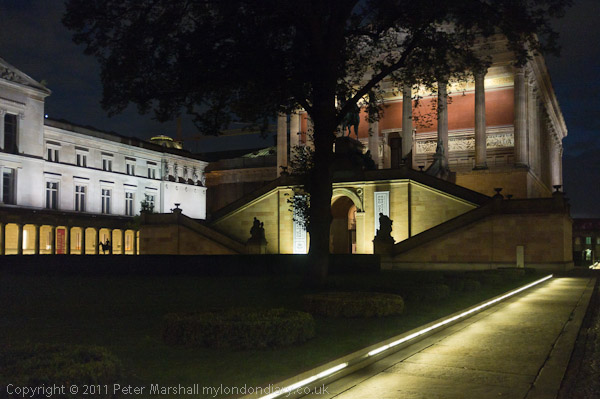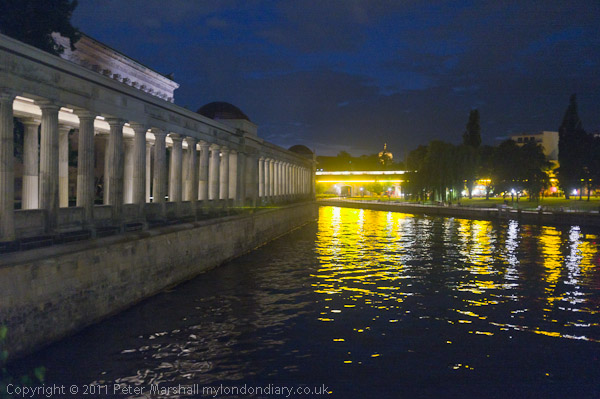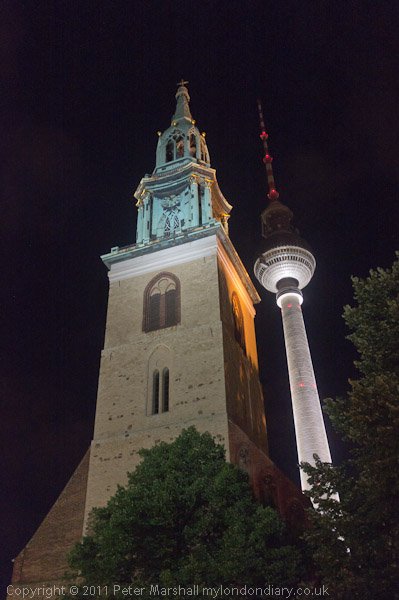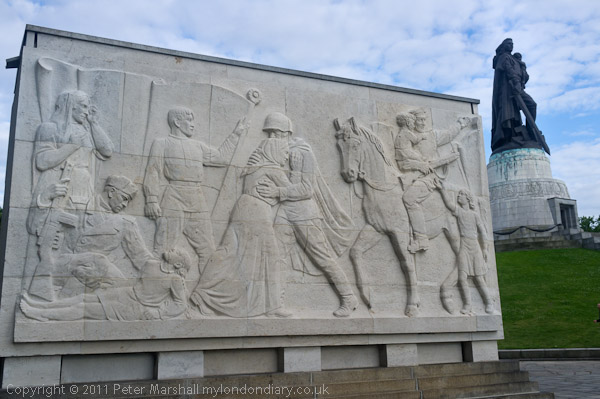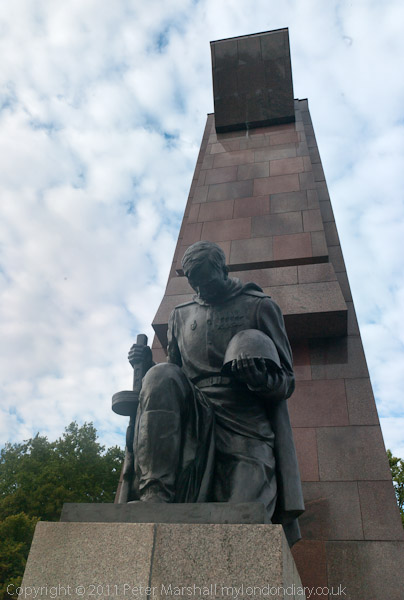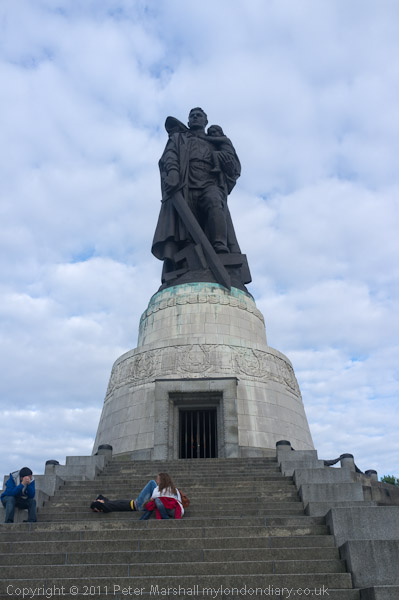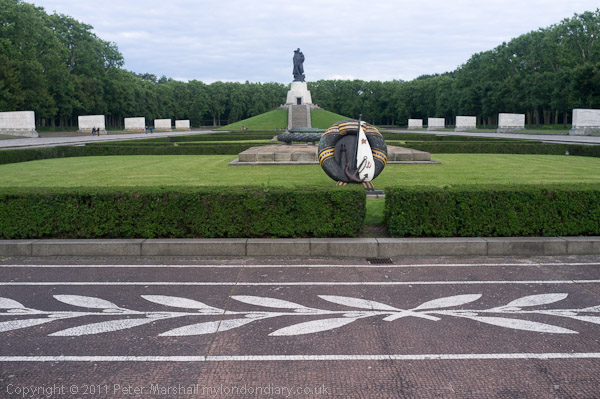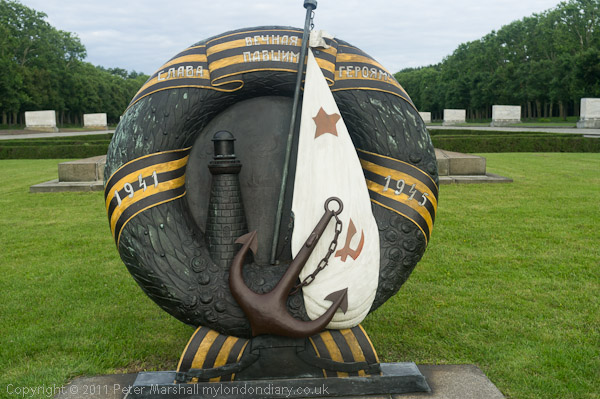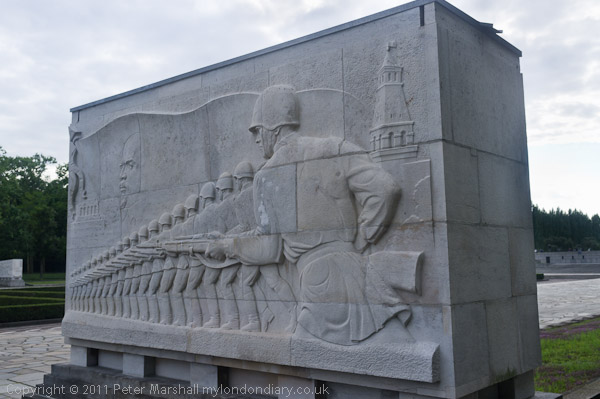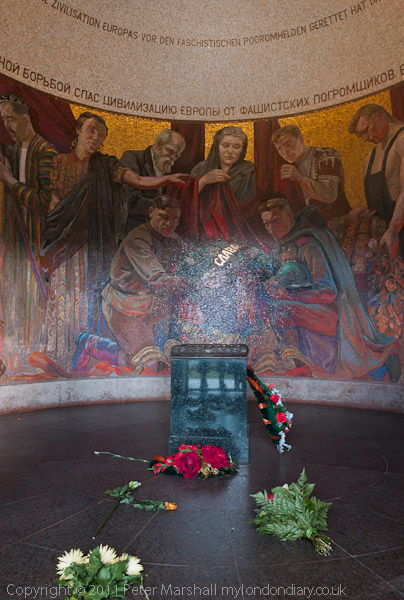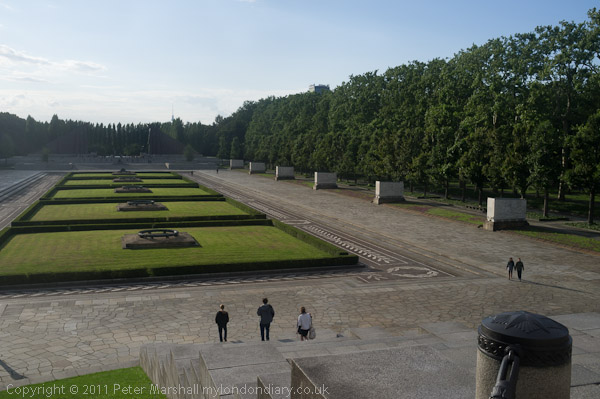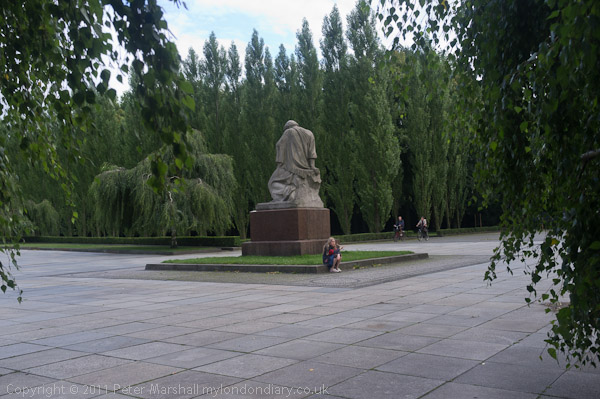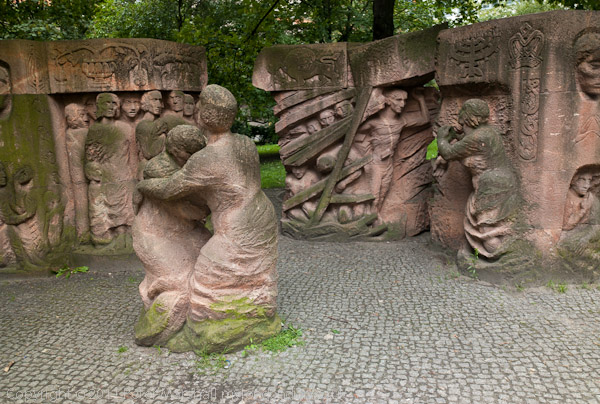
Perhaps the most moving of all Berlin’s memorials about the Nazi period is in Rosenstrasse, a sculptural ensemble commemorating the week of protests in 1943 by around 600 German women, wives and mothers of Jewish men, to have the men released by the Gestapo.
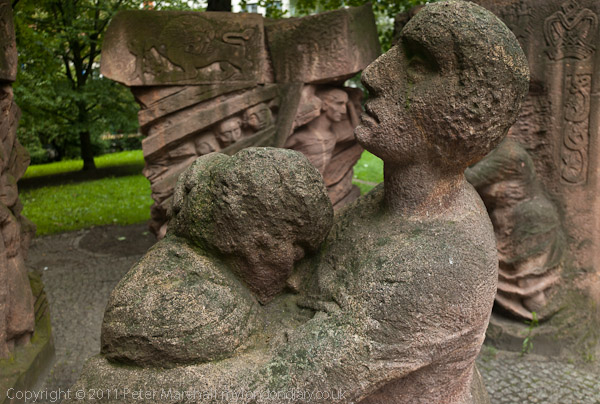
It was a desperate and brave protest, one of very few by German civilians against the Nazi authorities, and those women taking part risked their lives to get their men released. Their action saved the lives of the men, and many managed to live until the end of the war. The women’s protest was peaceful and surprisingly none of those involved were punished.
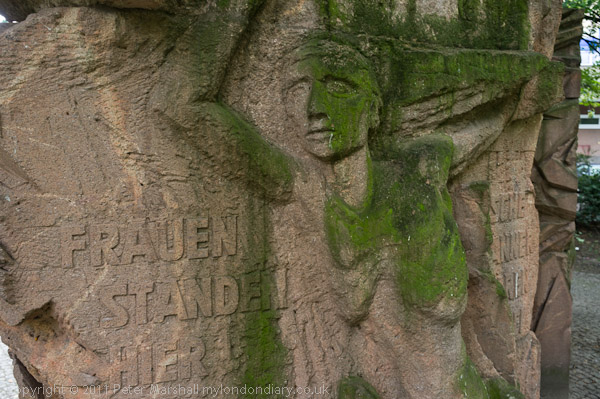
The group of red stone blocks by sculptor Ingeborg Huntzinger (1915-2009) is close to the site of the former Jewish Welfare Administration building where the men were held prisoner, and has an inscription:
1943
Die Kraft des zivilen Ungehorsams
die Kraft der Liebe
bezwingen die Gewalt der Diktatur
Gebt uns unsere Männer wieder
Frauen standen hier
Tod besiegen
Jüdische Männer waren frei
[1943
The power of civil disobidience
the power of love
overcomes the violence of dictatorship
Give us our men again
Women stood here
to overcome Death
Jewish men were free]
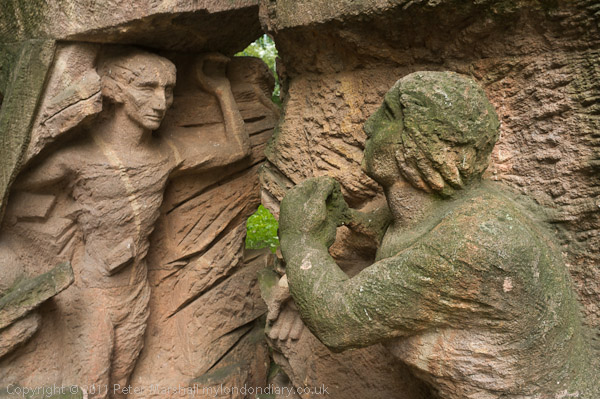
Also as a memorial to the event are two 1930s style advertising columns (Litfass columns) with text and photographs giving details about the women’s protest.
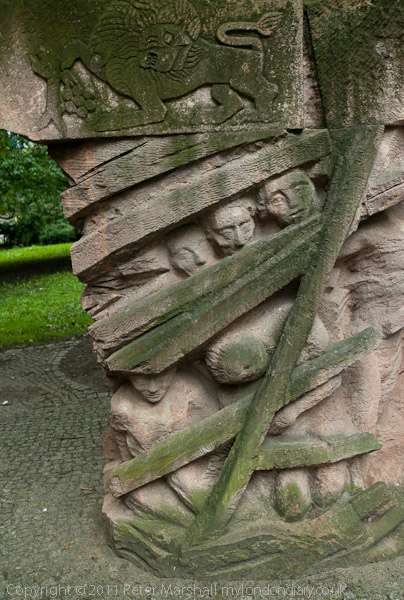
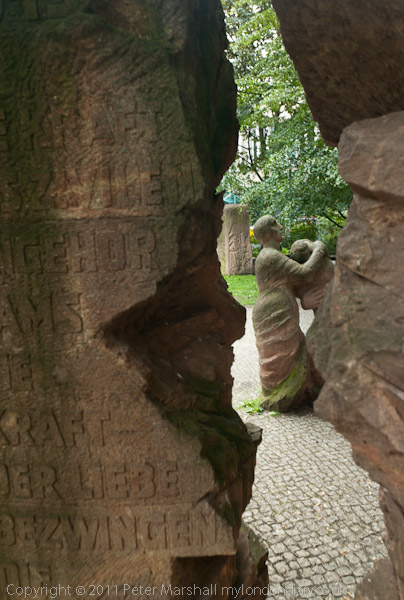
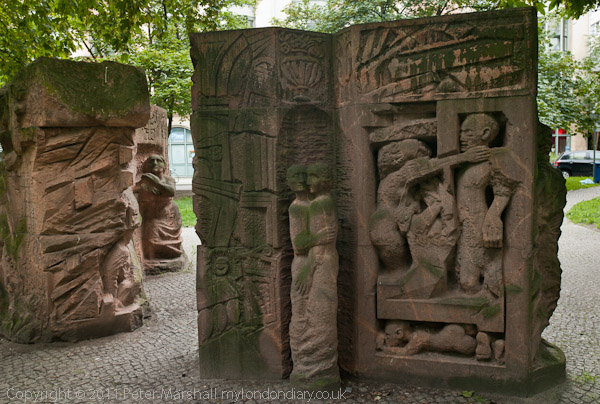
Huntziger designed the Rosenstrasse memorial in the 1980s, but the GDR had no interest in a memorial about the event, and it was only after the unification of Germany that in 1995 it was erected following a vote by the new Berlin senate. It is a work which powerfully expresses the desperation of the situation, the determination of the women and the anger of the sculptor at the violence of the Nazi regime. The protest took place during the final roundup of Berlin’s Jews by the Gestapo and SS at the end of February 1943, and though the bravery of the women’s protest saved their men, around 6,000 other Jews were deported.
A short distance away was something which rather lightened our mood, a Berlin Bear, the second of these large decorated figures we had met – later we were to find many more.
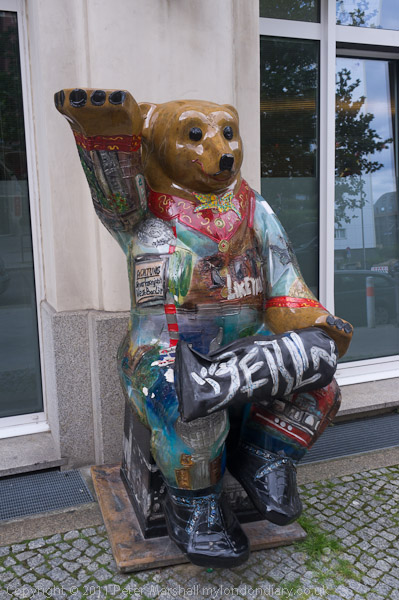
The area to the east of Karl-Liebknecht-Strasse near the centre of Berlin was heavily bombed in 1944/5 and parts more or less reduced to rubble. In 1977 a part of the area was redeveloped as a wooded park, the Marx-Engels Forum, a tribute to Marx and Engels with a larger than life bronze of the two men at its centre by Ludwig Engelhardt, (1924-2001), the overall designer of the project. It was finally completed in 1986. After reunification the sculpture became controversial, with many wanting its removal, but it was kept for its artistic and historical significance.
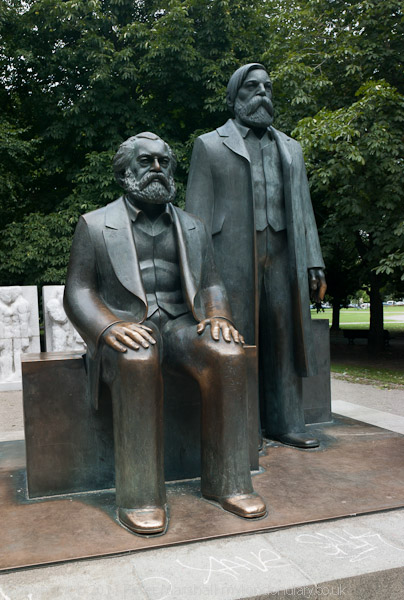
When we were there the sculpture had been removed from the centre of the forum to a wooded corner, possibly for the building of a new underground line, but perhaps as a more convenient down-playing of a period of history many want forgotten. It no longer dominates the area as it was planned to do.
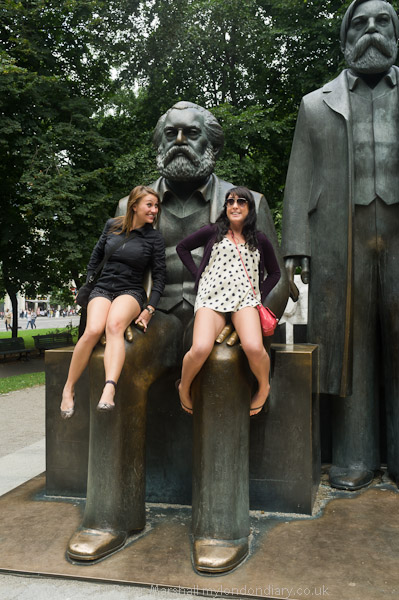
Although some dislike it, and it does seem to be a rather hidden in most of the tourist web sites, and rather denigrated in the guides it remains a popular tourist attraction, with parts polished to a shine by people climbing up on it to have their photographs taken. The statues – Marx seated and Engels standing – are at ground level, enabling interaction with the people, and appear very successful in that respect. While Socialist Realism may not be to everyone’s taste, they seem to be a very succesful example of it, and considerably better than most late 20th public statues for example those in our own Parliament Square in London.
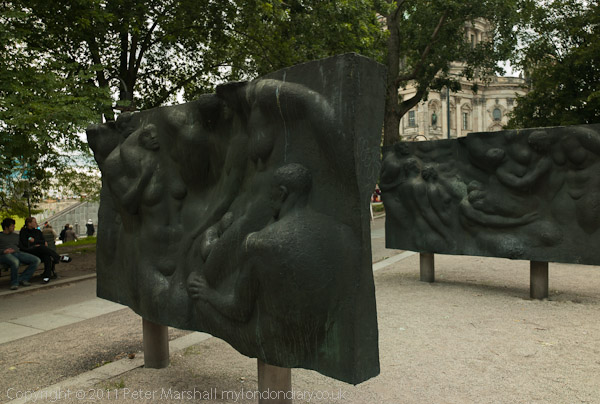
Marx and Engels are not isolated, both interacting with the public and part of an ensemble of other sculptural works, with two double-sided bronze panels depicting the struggle of humanity to emerge into the bright new world of communism, ‘Die Würde und Schönheit freier Menschen’ (The Dignity and Beauty of Free People)
1985-1986 by Margret Middell (b.1940).
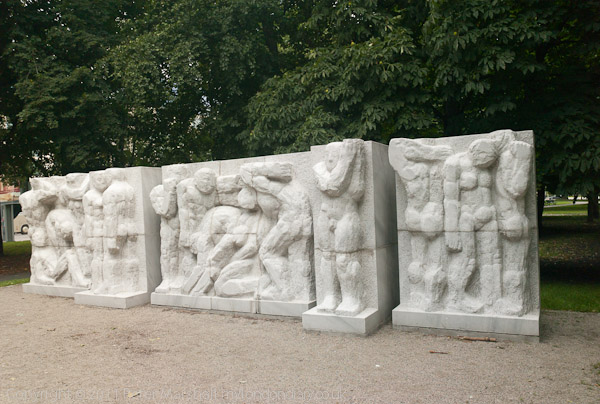
The five panel marble relief “Alte Welt” (Old World) (1985) by Werner Stötzer (1931-2010) forms a backdrop to the two figures. Also in the ensemble but not in my pictures are are four tall slim double-sided stainless steel columns (stelae) engraved with 144 small photographs illustrating ‘Der weltrevolutionäre Prozess seit Karl Marx und Friedrich Engels bis in die Gegenwart’ (The World Revolutionary Process, from Karl Marx and Friedrich Engels to the Present), a team effort led by Arno Fischer and Peter Voigt, with Friedrich Nostritz creating the stelae and Norbert Blum, Jürgen Frenkel and Hans Gutheil the photographic etchings.
Our walks around Berlin continue in later posts.
Previous Berlin post
______________________________________________________
There are no adverts on this site and it receives no sponsorship, and I like to keep it that way. But it does take a considerable amount of my time and thought, and if you enjoy reading it, a small donation – perhaps the cost of a beer – would be appreciated.
My London Diary : London Photos : Hull : River Lea/Lee Valley : London’s Industrial Heritage
All photographs on this and my other sites, unless otherwise stated, are taken by and copyright of Peter Marshall, and are available for reproduction or can be bought as prints.
To order prints or reproduce images
________________________________________________________
